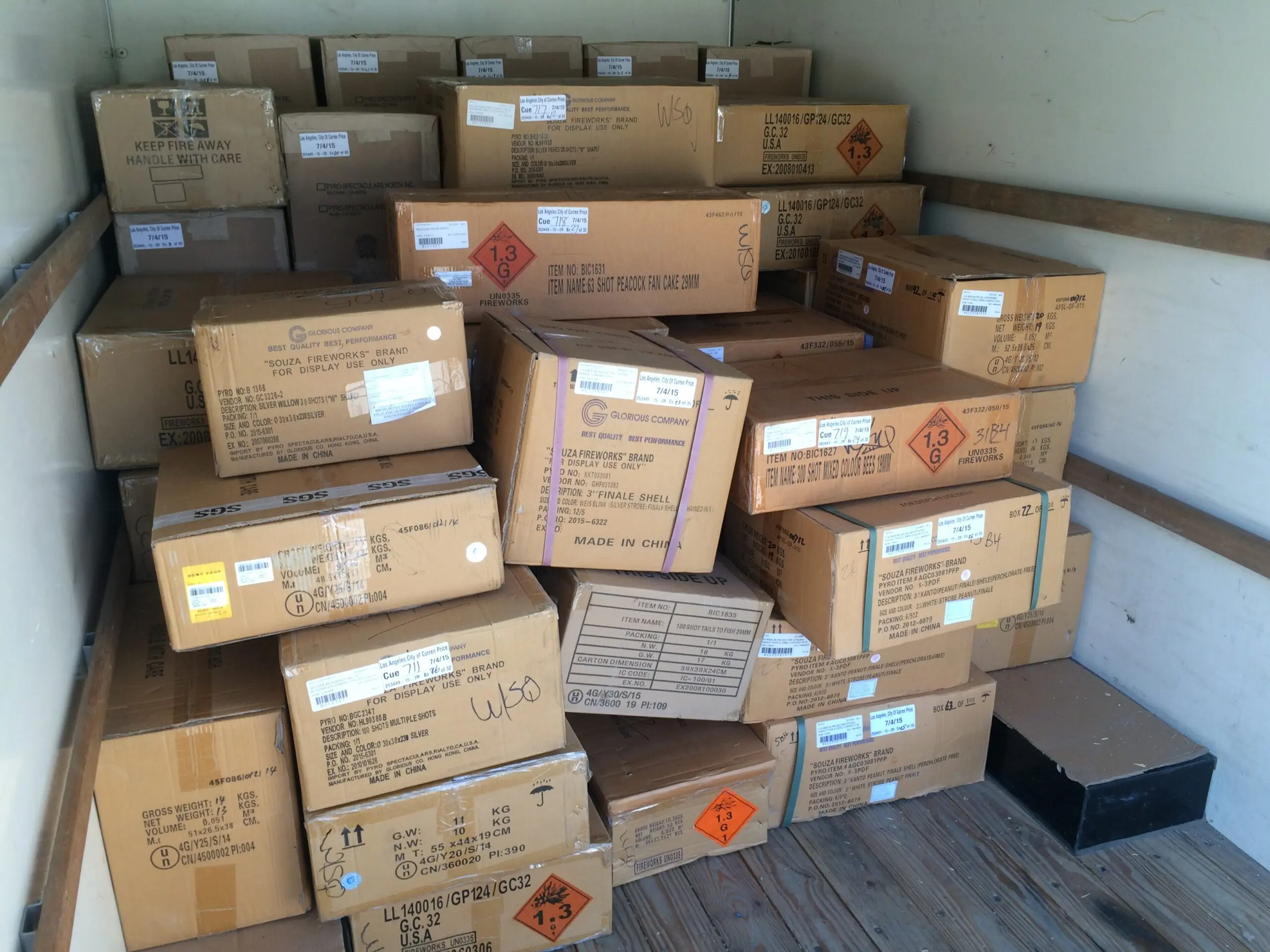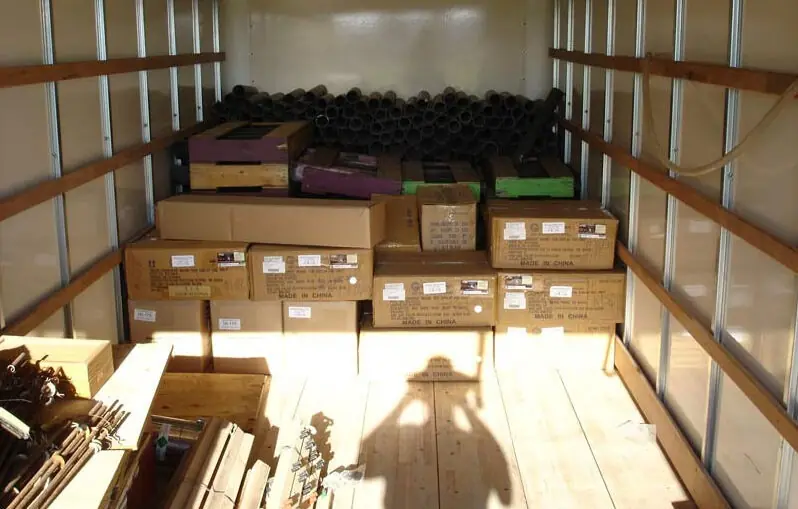Take me back to what to know your first fireworks show
Unloading the Pyro Truck
In most cases, the product (explosives) are loaded in the nose of the truck and stay put out of the way until you’re ready to actually set them up or load them. Unload all your equipment, racks, etc., set it all up, then bring then product off the truck. There are exceptions to every rule. One example would be in the case of a rooftop show where all equipment and product needs to get hoisted up to the roof in one sitting.

Unloading Pyro Racks
The most efficient method of unloading racks for a large display is to use the “chain” method. This method is quicker than having to move the truck to drop racks at each position. This is especially true since the racks are typically stacked by size on the truck, not in order of your setup. See the training video below for a demonstration and further explanation of this method.
Loading the Truck
It’s late, I’m tired, we just put in a 20 hour shift, can’t I just throw everything back in the truck? One word, professionalism. It takes little or no extra effort to organize the truck in a manner that makes it much easier for the guy who has to unpack it the next day, and LEGAL for commercial transport. Stack your racks first. Typically, large caliber mortars first, small caliber last. Make sure you stack the racks evenly in such a manner that they will not fall over in transport. This includes stacking them too high. Put general equipment in next, then your trash, and lastly the electronics. Make sure your electronics are packed so that they are not underneath any other equipment, and that there is no danger of other equipment falling on them. Now your truck is packed in an organized manner. If you have any leftover product label it properly and put it at the tail of the truck so the workers can see it first upon opening the truck. See video on how to re-pack live fireworks properly for transport.




